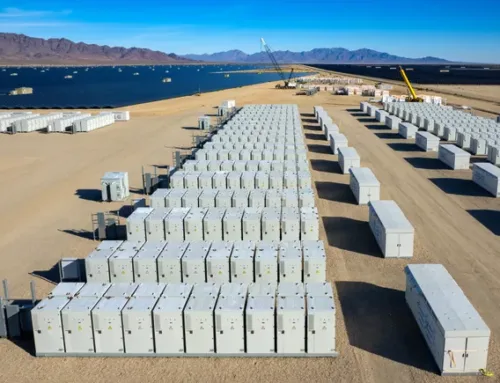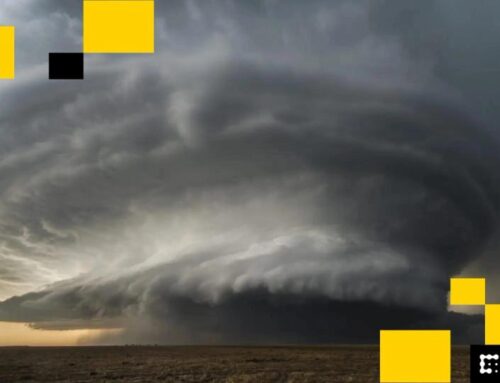Why Canucks’ options remain limited in new NHL salary-cap growth environment
May 12, 2025
The calcified austerity of the NHL’s flat cap era will not be mourned.
As part of the omnibus return-to-play agreement that the NHL and the NHLPA negotiated during the spring of 2020 amid the COVID-19 pandemic, salary-cap growth became untethered from hockey-related revenue.
The upper limit became frozen for a multiyear time horizon, stuck in the low $80 million range as the players effectively repaid NHL owners for a shortfall in their share of league revenues, which was created when NHL owners agreed to honour existing player personnel contracts even as games were played in empty arenas during the 2020 Stanley Cup playoffs and for most of the 2021 season.
This new era of cap growth started as a trickle last summer when the cap rose by $4.5 million. It will soon, however, become a league reshaping deluge.
At the end of this current league year, the upper limit of the cap will jump from $88 million to $95.5 million. And this is just the start.
The NHL and the NHL Players’ Association have already agreed to a three-year plan to raise the cap steadily across the next three seasons, culminating in a $113.5 million upper limit for the 2027-28 campaign. Long live the cap growth era!
If we assume the best laid plans for three consecutive years of cap growth will hold as planned, which is always a dicey proposition but feels likely given the massive new Canadian broadcast rights deal the NHL recently agreed to with Rogers, the shock of consistent growth to the NHL system will represent an entirely new world for the professional hockey business.
The impact of steady cap growth will shape NHL decision-making over the coming months. The extent to which our assumptions will have to shift becomes clearer when you consider the recent history of how the cap’s upper limit has grown, or more accurately, how it hasn’t. An anticipated $7.5 million lift to the upper limit this summer, for example, will represent the largest single-season rise in the NHL salary cap system ever. You’d have to go back well over 15 years, to the summer of 2008, to find a larger proportional increase.
For the Vancouver Canucks, this rising cap tide will provide far more flexibility than they’ve been able to count on while entering an offseason in the better part of a decade.
A rising tide, however, floats all boats. So even though the Canucks will have some real cap flexibility to work with this summer, the organization’s relative purchasing power isn’t quite so robust. That’s especially true when we account for the probable contractual cost of filling the high-leverage holes Vancouver has in its lineup, with an offseason shopping list that includes at least two top-six-calibre forwards.
Let’s keep this context in mind as we wade through one of our most vital annual exercises for thinking through the Canucks’ offseason. Our goal here is simple: We’ll do our best to objectively model where exactly the Canucks’ books stand heading into this summer. To keep things realistic, we won’t be making any pie-in-the-sky trades, nor will our model count on the club convincing a veteran player to sign a team-friendly extension.
We’re also not going to take this exercise across the finish line and actually build a full 23-man roster. The point isn’t to predict what the Canucks will do this offseason, it’s about exploring Vancouver’s realistic short-term options as a way of outlining reasonable expectations for what the club can accomplish this summer and where some of their challenges lie.
As our starting point, we’re going to make the following set of assumptions in building out our model.
1. For starters, we don’t need to make any assumptions about where the cap’s upper limit will fall for next season. The upper limit of the NHL salary cap will be $95.5 million for the 2025-26 campaign, as per an agreement that the league and the players’ association announced months ago. This level of certainty is a material departure from how the NHL has generally conducted business over the past decade or so. There have been a number of recent offseasons in which, even during draft weekend, NHL decision makers have conducted business while being unsure about precisely where the upper limit of the cap would fall.
2. The Canucks will carry $5,479,167 in dead salary-cap space on their books for the 2025-26 season. It’s high relative to what other NHL clubs will carry on their cap sheets, and it’s mostly a result of the Oliver-Ekman Larsson buyout from the summer of 2023. The buyout has provided Vancouver with nearly $12 million in salary-cap benefit over the past two campaigns, but rises inconveniently to $4,766,667 for this season and next. The Canucks will also carry an additional $712,500 hit as a result of the salary they retained in trading Ilya Mikheyev to the Chicago Blackhawks in June 2024. There’s no device in the NHL CBA that can grant Vancouver any relief for these dead cap charges. These are commitments the club is stuck with.
3. In building out our model, we’re going to automatically include all Canucks players signed to one-way contracts for the 2025-26 campaign, and additionally, any players who appeared in at least 25 games for Vancouver last season. With these assumptions locked into our model, which we’ll build using PuckPedia’s Real GM tool, we have the Canucks carrying 18 players, which in addition to the dead-space liabilities totals $79.55 million in total cap commitments.

(Image courtesy Puckpedia)
Effectively, as the Canucks enter this crucial offseason, the club has about $15.945 million in cap space it can use to sign five additional players to the 23-man roster, including multiple top-six-calibre forwards.
Now, of course, that $15.945 million number isn’t ironclad. It can change a little bit (if the Canucks were to reassign Nils Åman, for example), or it can change a little bit more (if they were to trade a veteran player on an expiring contract like Teddy Blueger, for example) depending on how Vancouver opts to proceed this summer in assembling its actual roster.
At this point, I often find it helpful to begin to plug in some key restricted free-agent (RFA) players and reserve list prospects we’d expect the Canucks this offseason. Even if RFA business is often done well after July 1, these are players the team has some measure of contractual control over. Whenever these players get signed, the Canucks will be mindful of earmarking some cap space to sign them with (or to ward off an offer sheet, if necessary).
Removing them from the board and plugging them into our model proactively allows us to work backward and focus on the more liquid cap resources.
In plugging in contract details for our RFA players, we’ll lean on Evolving Hockey’s contract projection model.
The model mines historical NHL contract data and predicts what various free agents will earn on their next contract. The model is a relatively powerful tool, and fares especially well when predicting contractual outcomes for restricted free-agent players, with R-squared correlations that have often hit 0.9 or above in the last few years. Even if we might quibble with their model by a few hundred thousand in one direction or another, it permits us to move forward with this exercise on solid and objective footing.
With those qualifiers and that context in hand, let’s plug the following skaters into the model:
1. First off, in addition to signing a pair of key restricted free agents, we’re also going to project the Canucks will end their lengthy stalemate with prospect Tom Willander at some point this summer and sign him to an entry-level deal carrying a $925,000 cap hit. In a departure from how we usually conduct this exercise, that number isn’t sourced from Evolving Hockey, but represents a midrange outcome for an entry-level player selected in the No. 10-15 range in the draft.
2. Using the model, we’re going to project Canucks pivot Aatu Räty will sign a roughly $1 million, two-year contract. The Canucks have typically attempted to sign players like Räty, young players they believe in but who have prove themselves as everyday options at the NHL level, to one-way, two-year deals that guarantee the player an NHL-level salary in exchange for a reduced and more manageable cap hit. There’s a decent chance, then, that Räty’s projected cap hit is too high by a $100,000 or so, but we’ll go with the dispassionately calculated number regardless.
3. The model suggests Max Sasson’s most likely outcome will be a two-year contract carrying a league minimum $775,000 cap hit. We’ll plug that into the model as well, for now:

(Image courtesy Puckpedia)
With Willander, Sasson and Räty signed, we now have the Canucks modelled out with $82,256,000 in committed cap space. That leaves them with just over $13 million in remaining space available.
One thing that leaps off the page is that there’s something of a logjam at centre in the bottom six. If the Canucks are intent on acquiring a top-six centre and moving Filip Chytil onto the third line — and they are — then they will need to actively carve out an opportunity for Räty if they believe he can be an everyday contributor next season.
While a player like Blueger represents a lot of what the Canucks value in a player and a professional, given their significant needs higher up the lineup and the composition of their bottom-six centre depth, one may wonder if he may be a player they consider trading as they work through the numbers game — both in terms of the cap and the Canucks’ roster composition — this summer.
The other key takeaway is that at this point, the Canucks will still need to add two extra bodies to their forward group. They would also be left with a very young and relatively inexperienced defence corps as it stands.
With that in mind, let’s turn our attention to Vancouver’s unrestricted free-agent (UFA) players.
This is where the exercise gets a bit complicated and will rely on some more subjective decisions to flesh out further. Among Vancouver’s key UFAs this summer, star scoring winger Brock Boeser is the highest profile. Vancouver and Boeser have found progress difficult to come by throughout this season, and given that the Canucks have drawn a hard line in contract talks to this point and that the model projects Boeser’s fourth NHL contract to come in north of $8 million with lots of term, we’re going to assume the Canucks will be unable to retain him this summer. We’ll make a similar assumption with versatile forward Pius Suter, whose next contract is projected to come in at over $4.5 million for four years.
Let’s put Suter and Boeser aside and focus on depth defender Derek Forbort. Forbort fit in well in his first Canucks season, and retaining him would provide a relatively young blue-line depth group with some reliable experience and penalty-killing stability. If we assume Forbort will be able to command a contract with the sort of length commensurate with what players with his type of resume and impact earn on average, Forbort’s contract projection comes in at $2.378 million.
Let’s include Forbort in our model, and we’ll also reassign Sasson below the line to maintain two available roster spots for forward upgrades. Doing so would put the Canucks at just under $84 million committed against the cap with 21 players on their roster:

(Image courtesy Puckpedia)
The Canucks now have just over $11.5 million to play with. That level of flexibility leaves the Canucks middle of the order cap-wise, relative to other NHL teams.
Vancouver will have more cap flexibility than the Dallas Stars, Tampa Bay Lightning and Vegas Golden Knights, but is a far cry in terms of available purchasing power relative to the Anaheim Ducks, who project to have well over $30 million in space below the upper limit this summer.
There’s also the positional value of what the Canucks will be chasing this summer to consider. Their $11.64 million in cap space might seem like a lot if you’re only looking to add two additional bodies, but when the positions you’re hunting for are top-line winger and a top-two line centre, then you’re positioned far more precariously.
For example, even if we project the Canucks sign Willander and Raty and re-sign Forbort to numbers based on Evolving Hockey’s model, they would still be out of space to return Boeser and Suter at their projected contractual numbers without first executing a trade to shed some salary.
There are, obviously, ways to work around that. We already spotlighted the Blueger question, and a cap dump trade involving the reliable, veteran pivot would give Vancouver the space required to get the band back together.
Surely this club has to aim even higher than that, though, especially with how dysfunctional and trying this season was. It’s abundantly clear that simply returning the Canucks team we watched last season will be insufficient. It’s crystal clear that this group and lineup need to be dramatically freshened up.
The Canucks have some cap flexibility, but their actual purchasing power grades out as below average relative to other clubs. Their flexibility is further dented by the bill coming due for some past errors that current Canucks hockey operations leadership inherited (in Ekman-Larsson’s case) or made themselves (in Mikheyev’s case).
There is still a path to execute the sort of aggressive top-six overhaul that this club requires and will attempt to pull off this summer. The strain from years of prioritizing the short term, however, show up in the Canucks’ books. And those are limiting factors that they will have to work around this summer.
(Photo of Brock Boeser: Derek Cain / Getty Images)
Search
RECENT PRESS RELEASES
Related Post




